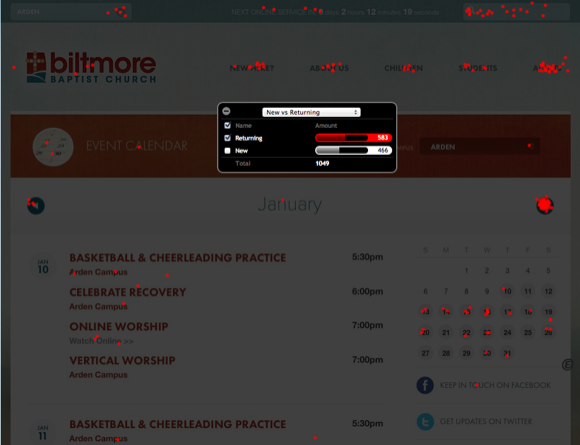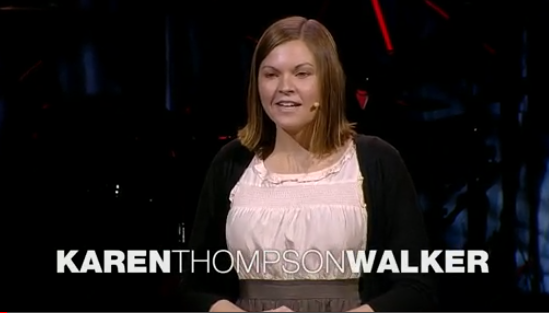The first time I really became aware of the full intensity of the problem was in a conversation with a couple students training for the ministry.
I was speaking at one of our top seminaries when after the class two men came up to me in private to ask a question. I could tell by the way they were speaking quietly and shifting their eyes that they had something awkward to say. I was sure they were going to talk about pornography. And sure enough, they wanted to talk about their struggles with the internet. But it wasn’t porn they were addicted to. It was social media. They told me they couldn’t stop looking at Facebook; they were spending hours on blogs and mindlessly surfing the web.
This was several years ago, and I didn’t know how to help them. I hadn’t encountered this struggle before, and I wasn’t immersed in it myself. Five years later: I have, and I am.
I used to make fun of bloggers. I used to lampoon Facebook. I used to laugh at Twitter. In my life I’ve never been an early adopter with technology. I’ve never cared what Steve Jobs was up to. I used to roll my eyes at technophiles.
Until I became one.
Now I have a blog, a Facebook page, a Twitter handle, a Bluetooth headset, an iPhone, an iPad, wifi at work and at home, cable t.v., a Wii, a Blu-ray player, multiple email accounts, and unlimited texting. Pride comes before a fall.
I was born in 1977 so I can remember life before the digital revolution. In college we had to go to a computer lab to get on the internet, which wasn’t a big deal because nothing happened on email and I didn’t see anything interesting online. By the time I was in seminary, however, things had changed. Email was a vital way to communicate and the internet was how my friends and I were getting our news (and doing Fantasy Football). But even then (in the late 90s and early 2000s) life was far less connected. I only got an internet connection in my room part way through seminary–one of those loud, lumbering ack-ack dial-up monstrosities. I didn’t have a cell phone in high school, college, or graduate school. As little as four or five years ago I didn’t do anything on my phone and barely accessed the internet at home. I’m not suggesting those days were purer and nobler, but my life felt less scattered and less put upon. Something has changed. A lot, actually.
What Are the Threats?
Much has been written and will be written about our insatiable appetite for the screen. I’ll leave it to others to decide if Google makes us stupid and whether young people are more or less relational than ever before. Let me simply suggest three ways in which the digital revolution, for all its benefits, is also an accomplice to our experience of being hassled, frazzled, and crazy busy. For if we understand the threats, we may have some hope of finding a way forward.
First, there is the threat of addiction. That may sound like too strong a word, but that’s what it is. Could you go a whole day without looking at Facebook? Could you go an afternoon without looking at your phone? What about two days away from email? Even if someone promised there would be no emergencies and no new work would come in, we’d still have a hard time staying away from screen. The truth is many of us can’t not click. We can’t step away, even for a few hours, let alone a few days or weeks.
In his bestselling book The Shallows, Nicholas Carr reflects on how his attitude toward the web has changed. In 2005—the year he says the “Web went 2.0″—he found the digital experience exhilarating. He loved how blogging junked the traditional publishing apparatus. He loved the speed of the internet, the ease, the hyperlinks, the search engines, the sound, the videos, everything.
But then, he recalls, “a serpent of doubt slithered into my infoparadise” (15). He realized that the Net had control over his life in a way his traditional PC never did. His habits were changing, morphing to accommodate a digital way of life. He became dependent on the internet for information and stimulation. He found his ability to pay attention declining. “At first I’d figured that the problem was a symptom of middle-age mind rot. But my brain, I realized, wasn’t just drifting. It was hungry. It was demanding to be fed the way the Net fed it—and the more it was fed, the hungrier it became. Even when I was away from my computer, I yearned to check e-mail, click links, do some Googling. I wanted to be connected” (16).
I’ve noticed the same thing happening to me for the past few years. Unless I’m really in a groove, I can’t seem to work for more than twenty minutes without getting the urge to check my email, glance at a blog, or get caught up on Twitter. It’s a terrible feeling. In a postscript to The Shallows, Carr explains that after his book came out he heard from dozens of people (usually by email) who wanted to share their own stories of how the Web had “scattered their attention, parched their memory, or turned them into compulsive nibblers of info-snacks.” One college senior sent Carr a long note describing how he had struggled “with a moderate to major form of Internet addiction” since the third grade. “I am unable to focus on anything in a deep or detailed manner” the student wrote. “The only thing my mind can do, indeed the only thing it wants to do, is plug back into that distracted frenzied blitz of online information.” He confessed this, even thought he was sure that “the happiest and most fulfilled times of my life have all involved a prolonged separation from the Internet” (226). Many of us are simply overcome—hour after hour, day after day—by the urge to connect online. And as Christians we know that “whatever overcomes a person, to that he is enslaved” (2 Peter 2:19).
Read Part 2 here.
Read more from Kevin here.

Tags: Attention, Brand, Kevin DeYoung, Social Media
|
What is MyVisionRoom? > | Back to Communication >
































